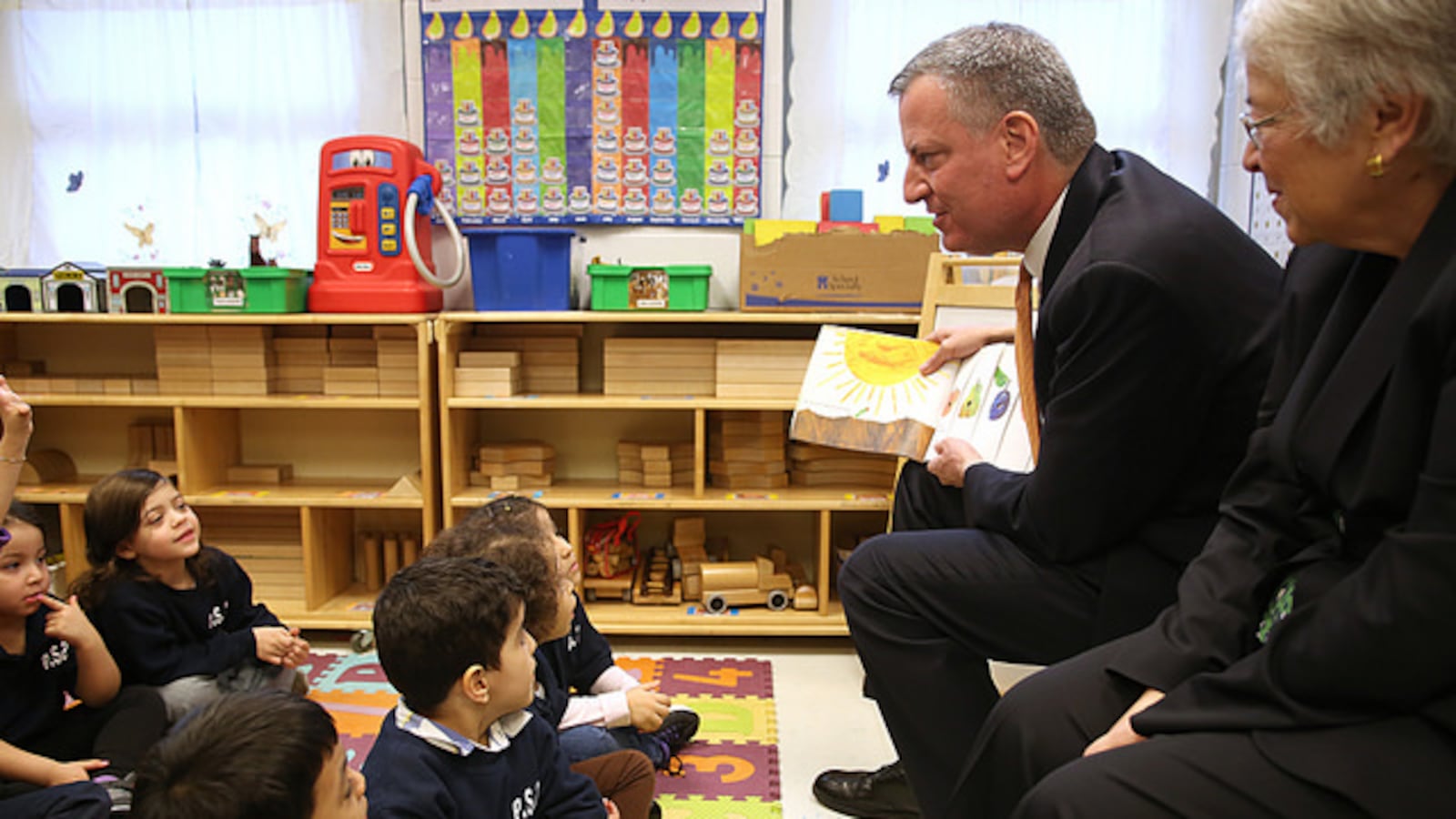The quality of Mayor Bill de Blasio’s universal pre-K program is on the rise, according to new data released by the city’s Department of Education. And starting Tuesday, parents will have access to individual “Pre-K Quality Snapshots” to help them choose the right program.
Pre-K for All, the mayor’s signature education initiative, now serves more than 70,000 students in roughly 1,800 schools and community-based centers.
The Department of Education hasn’t assessed each of those sites, but has observed more than 1,500 of them over the past two years. On one measure, which uses a 7-point scale, 84 percent of the sites evaluated between 2013 and 2016 earned a 3.4 or higher, the threshold that indicates a positive effect on students, according to city officials. That’s up from 77 percent of the sites evaluated between 2012 and 2015.
“We’re really pleased with the results we’re seeing so far,” said Deputy Chancellor Josh Wallack, who oversees the program. “I think it really validates the approach the mayor and chancellor took to build quality while also expanding access.”
The evaluation tool, known as the Early Childhood Environmental Rating Scale – Revised, includes a three-and-a-half hour inspection to evaluate things like whether the students are engaged in regular conversation, classroom furniture is child-sized, and a wide selection of books are provided.
Steven Barnett, a Rutgers University professor who has studied preschool, said that New York’s scores are as good or better than those of other cities with pre-K programs in place for roughly the same length of time.
“To be in the second year of this rapid expansion and be doing this well, I think, is great,” he said. Ultimately, he added, the programs should aim for even higher scores. “This is the starting point, not the end point,” he said.
On a second measure, known as the Classroom Assessment Scoring System, evaluators determine whether teachers are providing emotional support for their students, managing classrooms appropriately and encouraging student learning. On average, the programs improved slightly between 2014-15 and 2015-16 in the first two categories, but dipped slightly in the third, though still rating high enough to be considered effective, according to past research.
Also on Tuesday, the education department released public report cards on nearly every site. The “Pre-K Quality Snapshots” include each program’s scores on various assessments, along with families’ responses to survey questions on issues like safety and trust.
“We tried to make it really clear and concise, but at the same time we’re trying to give families a really holistic view,” said Wallack.
The reports are similar to the snapshots released for public schools, which were unveiled under Mayor Bill de Blasio in an attempt to provide more nuanced information about school performance than the A-F grades issued under Mayor Michael Bloomberg.
Cybele Raver, a senior vice provost at New York University, helped create the pre-K snapshots and said she’s encouraged by what she’s seen thus far.
“Giving kids more opportunities to go to preschool is a really important goal nationally, as well as a city and state priority,” she said. “But with that, we often run into the concern that with expanded access we might be at risk for lower quality.” This report, she said, “provides really good evidence that that’s not the case.”
Editor’s note: This story has been updated to better reflect the dates programs were evaluated.

